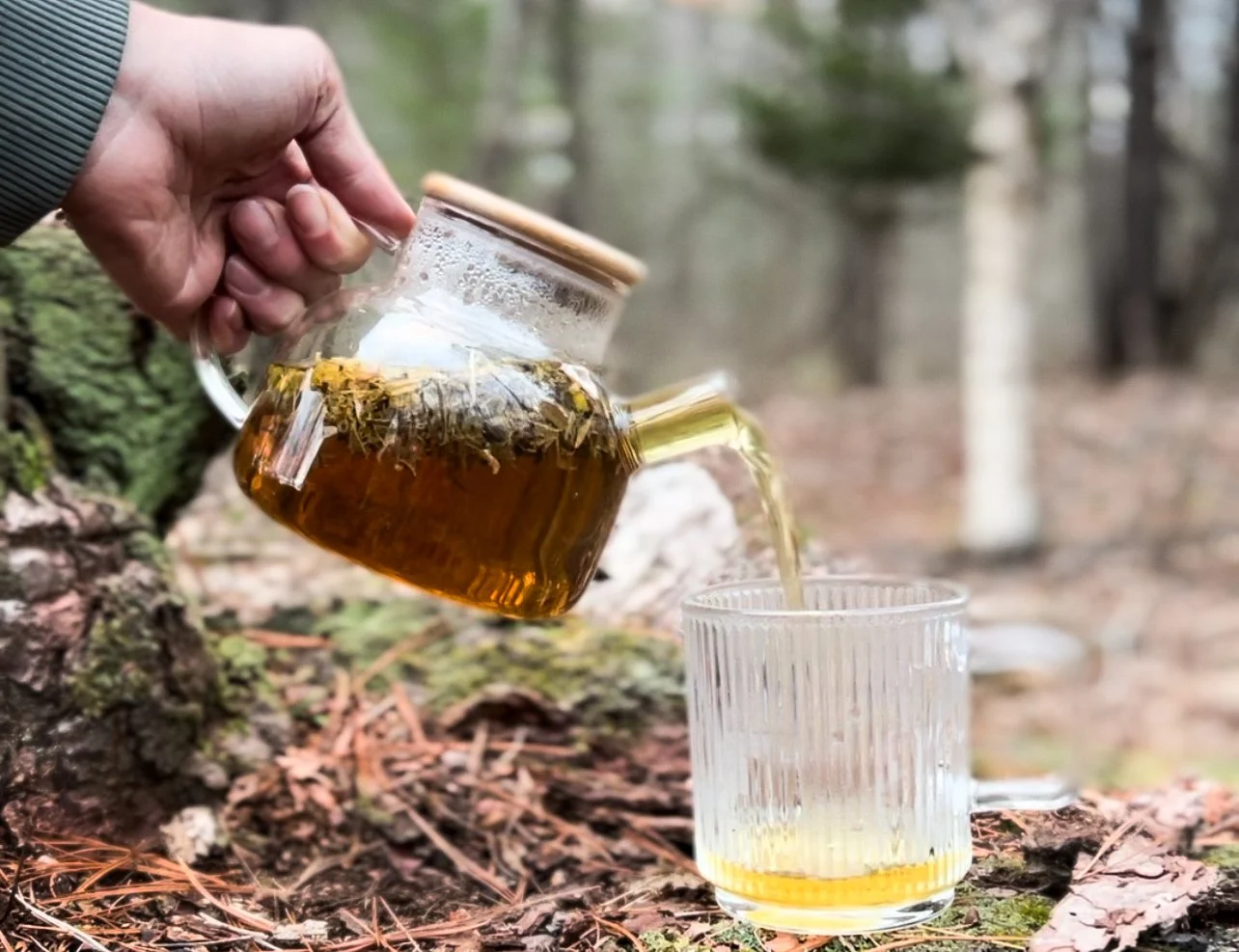Where My Tea Herbs Come From—and Why It Matters
Where Do Your Tea Herbs Come From? (And Why I Don’t Grow Them All Myself)
I love this question—because it comes from a place of curiosity, values, and care.
You might be wondering if I grow the herbs in your tea myself. The short answer? I don’t. While I do grow and forage some herbs for skincare, I don’t currently grow herbs for my tea blends. And honestly? I probably never will grow most of them—and that’s a choice made with a lot of thought and care.
Let me explain why.
⸻
The Truth About Tea Ingredients
Crafting teas like mine takes a wide variety of herbs—many of which can’t be grown in Michigan, or even in the United States. Plants like cinnamon, cardamom, rooibos, and black pepper simply don’t grow here. They require tropical climates, specific altitudes, or growing conditions we can’t offer.
To ensure flavor, safety, and effectiveness, I source all my ingredients from trusted organic and wildcrafted suppliers who specialize in growing and processing herbs around the world. These companies follow strict quality control standards and allow me to consistently create blends that do what they’re meant to do: support your body and taste amazing.
⸻
Herbs That Can’t Be Grown in the U.S.
These common tea ingredients are sourced internationally because they require tropical or subtropical climates:
Cinnamon – Native to Sri Lanka and Southeast Asia
Cardamom – Grows in the rainforests of India and Guatemala
Cloves – Native to Indonesia
Black Pepper – Grown in Vietnam and India
Rooibos & Honeybush – Only grown in a small region of South Africa
Yerba Maté – Native to South America
Vanilla Bean – Grown in Madagascar and Mexico
Licorice Root – Native to the Middle East and Central Asia
Ginger & Turmeric – Limited U.S. cultivation; mainly grown in India and Southeast Asia
Even herbs like tulsi and lemongrass, which can grow in parts of the U.S., are typically imported for quality, consistency, and availability year-round.
⸻
What Can Grow in Michigan?
Despite our shorter growing season, Michigan is rich in herbal potential—especially for tea lovers!
Many soothing, nourishing, and fragrant herbs grow beautifully in our state, whether they’re native or cultivated. Some of these include:
Mint (peppermint, spearmint)
Lemon balm
Chamomile
Calendula
Nettle
Red clover
Oatstraw
Yarrow
Rose petals
Lavender
Elderflower (Sambucus canadensis) – native and abundant
Echinacea
Holy Basil (Tulsi) – as an annual in summer
Violets, plantain, and dandelion leaf – wild and often foraged
I do grow or forage many of these for my skincare line and personal use, and I’m always dreaming about what else I might plant in the future. But even if I one day grow a few herbs for tea, the majority of ingredients will still need to be sourced globally.
⸻
Why Sourcing This Way Matters
I know it’s beautiful to imagine a homestead tea garden producing every herb used in a blend—but the truth is, that would limit what I could offer you. More importantly, it would compromise quality. My priority is to create blends that are consistent, flavorful, and effective—using the best herbs I can find, from wherever they grow best.
That’s why I source globally but blend locally—by hand, with care, and a whole lot of intention.
⸻
If you have more questions about how or why I source certain herbs, feel free to reach out! If you’d like to shop our herbal apothecary and teas, check out the shop here.
Want more garden-to-apothecary inspiration?
Join the Wild Faith Acres newsletter to get weekly updates from our homestead, early product releases, and seasonal tips for living in rhythm with the land. You can join here.

